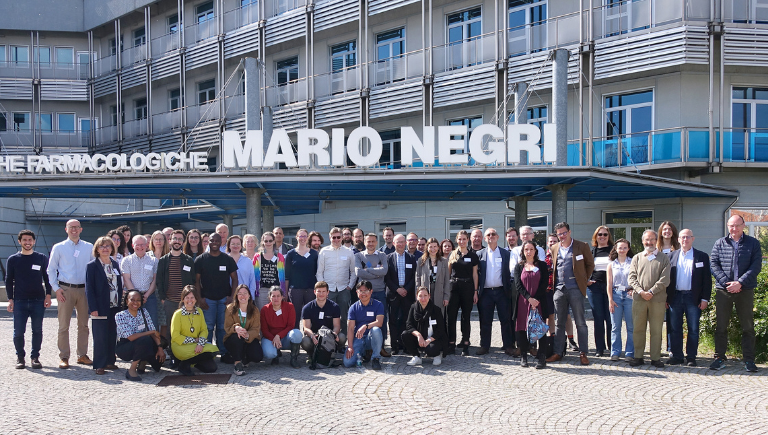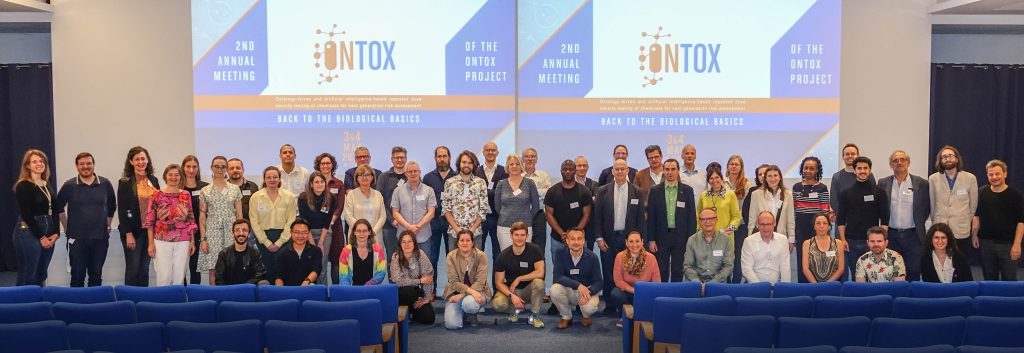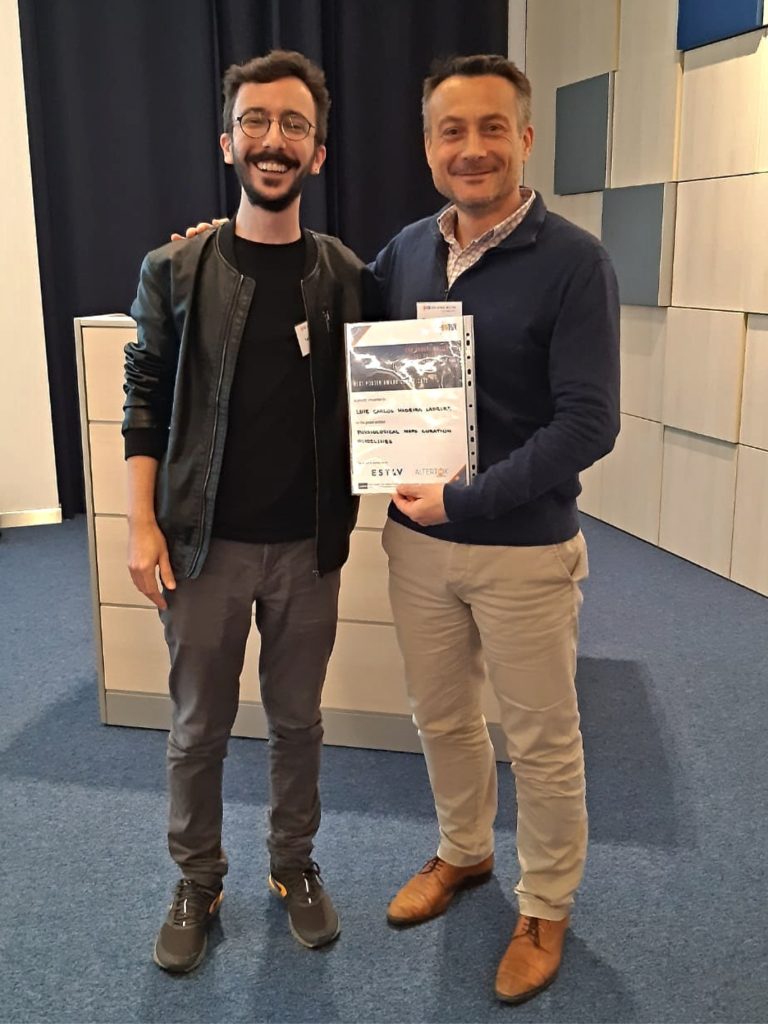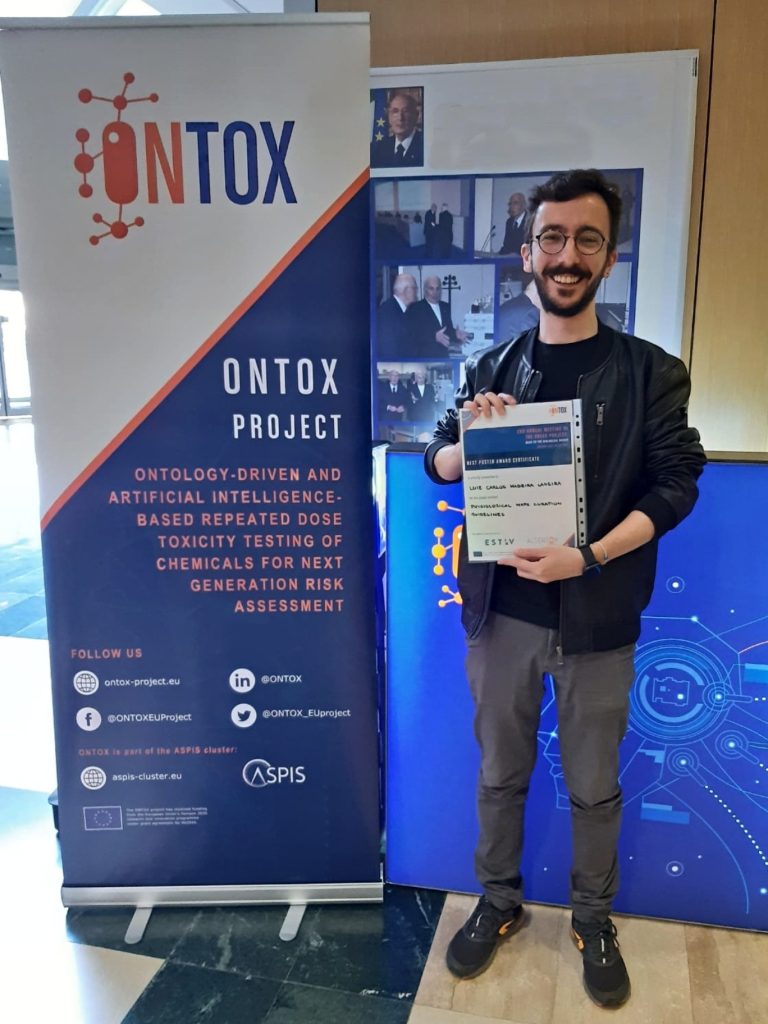
The ONTOX consortium, consisting of 19 partners from Europe and the USA, recently held its second annual meeting to review the project’s second-year results. The consortium aims to provide a functional and sustainable solution for advancing human risk assessment of chemicals without using animals, in line with the principles of 21st-century toxicity testing and next-generation risk assessment. The ONTOX consortium is utilising a novel approach to achieve its vision, predicting the toxic effects of chemicals in the liver, kidneys, and developing brain without use of animals. ONTOX primarily focuses on pharmaceuticals, cosmetics, biocides, and food safety. Centre of Experimental Medicine SAS is part of the ONTOX on behalf of the Slovak Republic.
The second ONTOX annual meeting occurred in Milan, Italy, on 3 and 4 May, 2023. During the project’s second year, ONTOX made significant progress towards its goals. The Scientific Advisory Board reviewed the progress made over the past year and expressed satisfaction with the results. The meeting also featured a poster contest for young ONTOX scientists, who contributed to the project’s vision of testing chemicals without using animals.

“The Scientific Advisory Board commends the ONTOX consortium for the tremendous progress made since the past year. The physiological maps built in this project leveraging artificial intelligence are a contribution to the scientific community. The consortium is encouraged to highlight the value added by these maps together with newly developed adverse outcome networks intended to be used in the probabilistic risk assessment. Use cases integrating the different domains of ONTOX (kinetics, biology, toxicology, chemistry) are anticipated to illustrate the impact of the deliverables of ONTOX in risk assessment,” comments Dr. Gladys Ouedraogo (L’Oréal, France), on behalf of ONTOX Scientific Advisory Board, which role is to scrutinise whether the project is heading towards the desired outcomes.
The Scientific Advisory Board also served as a jury for the ONTOX young scientist poster contest, held for the first time during the ONTOX annual meeting. After careful consideration, the distinguished panel awarded the top prize to Dr. Luiz Carlos Maia Ladeira of the Université de Liège, Belgium, for his outstanding poster entitled “Physiological Maps Curation Guidelines“.

“I am extremely happy to see the major progress in year 2 of the project as well as the increasing efforts to collaborate with other initiatives, including the ASPIS cluster and Partnership for the Assessment of Risks from Chemicals (PARC),” concludes Prof. Mathieu Vinken, ONTOX coordinator (Vrije Universiteit Brussel, Belgium). “Our early career scientists have been instrumental in driving this progress, thanks to their active engagement, helpfulness, and supportive attitude. Their enthusiasm and dedication to advancing the field of toxicology are truly inspiring, and I have no doubt that they will continue to contribute significantly to our collective efforts going forward.”
The primary motivation behind the ONTOX project is the societal, ethical, and economic need for animal-free methods to test the safety of chemicals, relying on state-of-the-art methodology and cutting-edge scientific knowledge. The ONTOX consortium is at the forefront of developing more ethical and sustainable approaches to chemical safety assessment. The next three years will be crucial in maintaining this momentum and advancing the project’s goals.

Centre of Experimental Medicine SAS is appointed as the ONTOX’s Communication work package and deputy coordinator for the non-scientific tasks (communication, dissemination, exploitation and data management). It is responsible for the overall communication strategy and creating the various communication materials to reach relevant stakeholders from research, regulatory authorities and industry. CEM SAS also brings the ONTOX vision closer to the general public.




